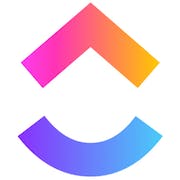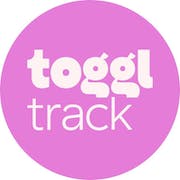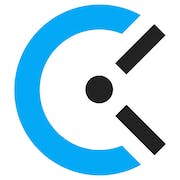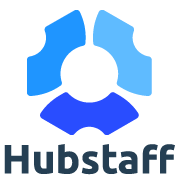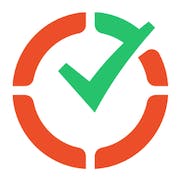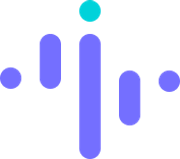Looking for the best employee monitoring software? Our comprehensive buyer's guide outlines the top solutions available, helping you make an informed decision. Boost productivity and ensure compliance with ease. Click now to learn more!
In today's world, where information is power and data is a valuable commodity, employee monitoring software has become an essential part of the modern workplace. It is no longer a luxury but a necessity for businesses of all sizes and industries to monitor their employees' activities to remain productive, safeguard sensitive information, and stay compliant with regulations. By tracking employees' online activity, work progress, and communication, employers can identify areas for improvement, measure productivity, and address security concerns.
While some may view employee monitoring software as intrusive, it can improve the workplace environment by promoting honesty and accountability among employees. What's more, organizations seem to understand its importance – 60% of companies use some kind of software to monitor their employees in 2022 alone. If you're looking for a reliable and efficient employee monitoring software solution for your business, we've got you covered in this comprehensive guide.
What is employee monitoring software?
Employee monitoring software is a technology solution used by employers to monitor the activity of their employees at work. The software collects data from various sources such as computer and internet usage, GPS tracking, and video surveillance. This information can then be used by employers to improve productivity, identify potential security threats, and ensure compliance with company policies.
The software has become popular in recent years as companies look for ways to improve efficiency and reduce risks. Whether you run a small business or a large corporation, an employee monitoring tool can provide valuable insights into personnel behavior and performance. Some of the most common use cases for the software include:
- Time tracking: it can be used to track the amount of time employees spend on specific tasks or projects, helping employers to track billable hours and improve time management.
- Productivity monitoring: employers can use monitoring software to track how much time employees spend on certain websites or applications, enabling them to identify and address any productivity issues.
- Employee performance evaluation: with features like key performance indicators (KPIs) and activity logs, employers can evaluate employee performance with ease.
- Security: the software can deter or detect insider threats and data breaches, offering an added layer of security to organizations.
- Compliance: it can help ensure that employees are complying with company policies and regulations, such as data handling or privacy guidelines.
Customer service, manufacturing, healthcare, finance, and more – essentially, any organization that relies on employee productivity can benefit from this type of technology. Adoption of the software is especially prevalent for companies with remote workers, as it helps to ensure they are working efficiently and complying with company policy.
Benefits of Employee Monitoring Software
Employee monitoring software is becoming increasingly vital to businesses due to advancements in technology and changing work patterns. Its main advantage is allowing organizations to keep track of employee activities, but what other benefits can you expect from using the software? Read on to find out.
-
Increased productivity
By tracking employees' activities, employers can identify any time-wasting practices and address them accordingly. The software can also help to identify which employees are excelling and which ones need additional training or support. -
Improved data security
It can help prevent data breaches by monitoring employee activities and flagging any suspicious behavior. This helps protect sensitive company information and ensures that all employees are held accountable for their actions.Compliance with regulations -
Compliance with regulations
Many industries have specific regulations regarding employee activities, such as data protection laws. Employee monitoring software can help ensure that businesses are following these regulations and avoiding any legal consequences. -
Better time management
With employee monitoring solution, managers can keep track of their team's work hours and ensure that they are meeting deadlines. This helps improve overall time management and keeps a project on track. -
Reduced risk of theft
Employee monitoring software can help prevent theft by identifying suspicious behavior and flagging potential risks. This helps ensure that all employees are trustworthy and not engaging in any harmful actions.
Overall, employee monitoring software can help business run efficiently and effectively, and can benefit both employers and employees in the long run.
10 key features of employee monitoring software
The solution is becoming increasingly common in workplaces around the world, and for good reason. Here are the top 10 common features of employee monitoring software that you should look for when choosing one for your own business:
- Activity monitoring allows managers to see detailed reports on how an employee spends their time on the computer, including which applications and websites they use.
- Screen capturing snaps screenshots of the employee's computer as they work, allowing managers to see exactly what they are doing.
- Keylogging records all keystrokes made by the employee, helping managers know what is being typed into their computers.
- Email monitoring supervises which emails have been sent and received, along with their content and attachments.
- Chat monitoring monitors instant messaging conversations across various platforms, to ensure that employees are not using these for personal reasons.
- File tracking helps to see file usage and transfers, ensuring that employees aren't leaking sensitive information.
- GPS tracking tracks the physical location of their employees, which can be helpful for some remote teams.
- Time tracking calculates the amount of time spent on specific tasks, making it easy to identify areas where employees may need support.
- Productivity analysis analyzes a variety of metrics to determine how productive employees are during work hours.
- Reporting and analytics generates reports and analytics based on employee data, making it easy for managers to identify patterns and trends.
These 10 features give employers a comprehensive view of their employees' activities and productivity levels, while also providing insight into areas where employees may need additional support.
Things to consider before investing into an employee monitoring solution
So far, we have established that the software can help businesses of all sizes to improve their operations and increase productivity. It sounds tempting and you would like to invest into one too. But with numerous solutions available in the market, selecting the right solution can be a challenge!
To help you make a right decision, we have put together several essential factors to consider when choosing an employee monitoring software:
Features
Depending on your business needs, consider software with features that provide the most value. Some of the common features include activity monitoring, keystroke logging, website blocking, screen recording, and email monitoring.
User-friendliness
A good software should be easy to use for both managers and employees. It should have an intuitive interface and easy-to-understand reports.
Compatibility
Ensure that the software is compatible with your existing systems and operating systems. This will help you avoid additional costs and compatibility issues.
Data privacy
Note that some monitoring software can raise privacy concerns among employees. Choose a software that complies with data protection regulations and is transparent in how it collects and uses employee data.
Cost
Pricing varies among software vendors, with some offering a monthly subscription while others have a one-time fee. Cost of these programs ranges from $20 to $150 per user per year, though most fall between $40 and $80 per user annually. Choose a software that fits within your budget and offers value for your investment.
Customer service
Choose a vendor with excellent customer service. This will ensure smooth installation and operation, and make it easier to resolve any issues that may arise.
Considering the factors mentioned above can help you choose a software that meets your business needs while enabling you to monitor employees without compromising their privacy.
Employee monitoring software trends in 2024 and beyond
The software is predicted to flourish in the coming years as companies strive to enhance organizational productivity and meet compliance standards. The biggest trends to watch out for in 2024 and beyond? Our research indicates that employee monitoring tools are likely to shift in the following direction:
- Increased use of cloud-based software to support remote work and reduce infrastructure costs.
- Integration with artificial intelligence, data analytics, and machine learning technology to provide more accurate reporting, analysis, and recommendations to managers. This will help managers evaluate employee performance effectively, which will ultimately lead to better workflow optimization and higher levels of productivity.
- Focus on behavioral analytics, including keystroke analysis, inactivity tracking, and email sentiment analysis. Managers will use this data to identify employees with higher levels of productivity and reward them accordingly, or provide training opportunities to those who are underperforming.
- A move towards more holistic tracking and data analysis. Productivity software that tracks only keyboard activities and meeting attendance can foster a "cycle of responsiveness," where employees prioritize quick responses to emails and messages over their core work. To minimize this issue, more comprehensive solutions will track and analyze employees' daily activities, including the time spent on particular tasks, times of high productivity, and inactivity periods.
- More focus on building psychological safety to promote openness about distractions. Managers and employees alike will work to create an "indistractable" workplace by setting clear expectations around communication, building trust, and minimizing interruptions during focus work and off-hours.
- Integration with popular project management and communication tools like Slack, Trello, and Asana. This will allow companies to streamline their communications and maximize productivity by creating a centralized view of employee activity.
Conclusion
Employee monitoring software has become an essential tool for businesses, both with remote and in-house employees, looking to optimize workflow, increase efficiency, and ensure compliance with organizational policies. It offers a wealth of benefits and helps to create a more efficient and productive workplace.
Selecting the right employee monitoring software can be the difference between a harmonious and productive workplace and one fraught with issues. We hope this guide will assist you in making an informed decision and selecting a tool that aligns with your needs.

